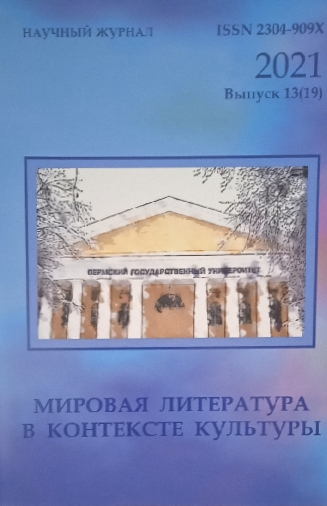The Intertextual Motif of the Estate-garden in S. Rushdies’e Novel Two Years Eight Months and Twenty-eight Nights
DOI:
https://doi.org/10.17072/2304-909Х-2021-13-12-23Abstract
The article examines the intertextual references found in S. Rushdie's novel «Two Years, Eight Months and Twenty-eight nights» that related to the motif of the estate-garden. Literary works are analyzed as sources – Voltaire's «Candide», E. Poe's «The Domaine of Arnheim», as well as works of fine art – a number of paintings by the surrealist artist R. Magritte, eponymous to E. Poe's story. The most attention is paid to the image of one of the main characters – the gardener Geronimo Maneses – as a hero who directly embodied the covenant to cultivate his garden in a literal and metaphorical sense. The polemical nature of quoting a maxim from the work of the author of the Enlightenment is noted. In conclusion, the role of the broadcast sources of intertext in the artistic system of the novel is characterized. Keywords: S. Rushdie, «Two years, eight months and twenty-eight nights», Voltaire, «Candide», E. A. Poe, «The Domaine of Arnheim», R. Magrit, intertext.Downloads
Published
2021-12-28
How to Cite
Bratukhina Л. В. (2021). The Intertextual Motif of the Estate-garden in S. Rushdies’e Novel Two Years Eight Months and Twenty-eight Nights. World Literature in the Context of Culture, (13), 12–23. https://doi.org/10.17072/2304-909Х-2021-13-12-23
Issue
Section
Статьи

